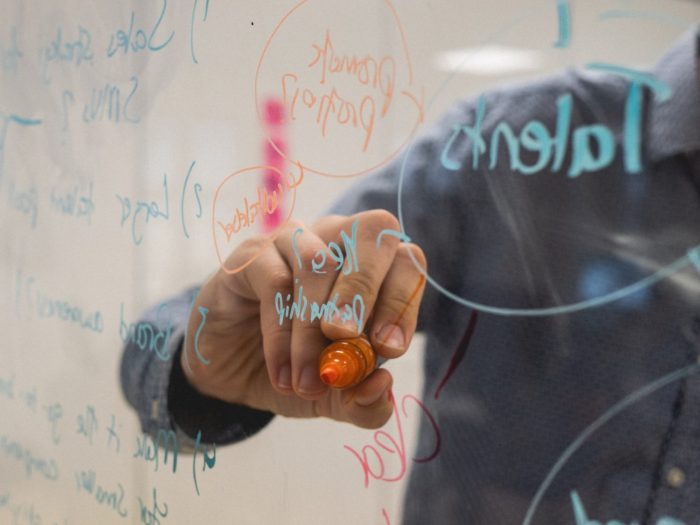Keeping Your Company Creative and Innovative in a COVID-19 World

Blog
Many of us business owners pride ourselves in being innovative personally, and within our company and teams. Often, our offices may even clearly and prominently put this on display — showing that we promote brainstorming, creative play, invention, and even prototyping in the generation and/or development of new ideas, products, or services.
But now… here we are in a sort-of surreal version of “normal” due to COVID-19. Several of us are working 100% remotely, along with our teams. Others are blending some remote and some in-office work in different ways. Few are operating under “business as normal.”
Unfortunately, this can cause the exciting and unique ways we’ve supported and encouraged innovation, that we’ve loved and embraced, to suffer if we’re not careful.
So, how we do we keep our companies innovative in this COVID-19 world where we are often — even frequently, or always — separated in time and space?
We need to begin by embracing the realization that our creativity doesn’t necessarily have to suffer if or when we are no longer together physically with our teams all the time.
There is a lot to be said for crisis and change driving innovation.
We’ve definitely seen that already in the way many businesses have been forced to adapt to this “new normal” not only in terms of business, but in LIVING, that has come courtesy of COVID. Not just businesses, but even whole industries, have had to look for new or different ways to serve their customers. Quite a large group have risen to the challenge.
How did they do this when they were “apart?”
First, these companies that are “doing it well” began by considering the new challenges being faced by their customers. Many of these challenges, of course, were new for these people — their customers — as well. Thus, they resulted in different problems, needs, and desires than the customers had before. Although, the customers themselves — in terms of demographics — were quite frequently, still the same.
This required the companies seeking to meet these challenges, to use technology, to brainstorm interactively regarding new solutions. Interestingly, a lot of them report that brainstorming virtually was more inclusive—that more group members participated virtually, than they did in person.
Likely, this harkens back to the idea that people are braver online — even if on camera — than in person. Even introverts usually speak up more on camera, because it adds an impression of a safety barrier of sorts. Furthermore, video technology CAN be helpful in building relationships since very literally seeing eye-to-eye is an important part of growing the trust that is necessary for innovative and creative team interaction. It creates what is called “cultural connectivity” and so using video tech this way can be very beneficial.
However, perhaps even more interesting, is that several companies report that when the brainstorming was off-camera, inclusive percentage of participation increased even more. Generally speaking, it gave those normally not comfortable with sharing when the “camera was on them” an opportunity to shine.
One thing then, that we can take from this and what it can teach us, is that by holding in-person brainstorming, planning, or development sessions, we can possibly miss out on some brilliant ideas. We can lose out especially, if there are some creative and innovative team members who don’t like to — or who aren’t inclined — to share when it’s in such a public forum.
Thus, while technology and video can help us maintain — and even advance — creativity in this virtual (or semi-virtual or blended-virtual) COVID-19 world, we need to be careful to not just try and emulate the same in-person environment we had before…
That doesn’t seem to be the best answer either. Primarily, since by doing so, we might miss up on the valuable opportunity to get new viewpoints from those who are normally “voiceless” when that voice has to be on a stage (visible) in some way. Giving them the chance to chime in, in a manner or way in which they are more comfortable, just might present us with new thoughts, ideas, and pathways we would have otherwise missed.
